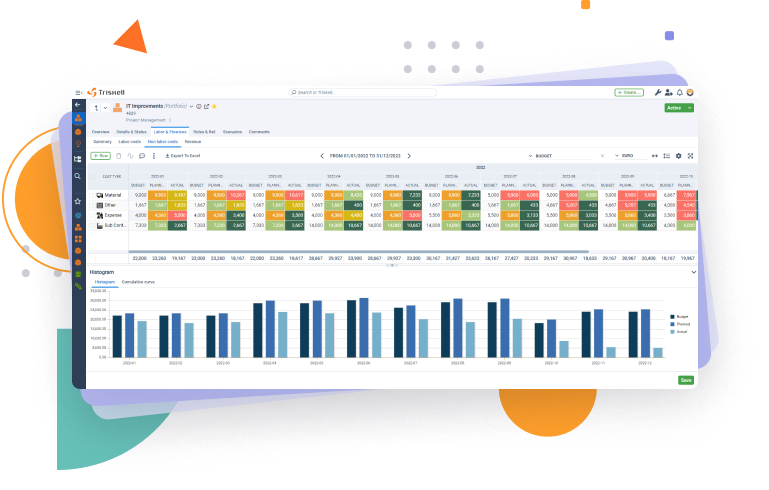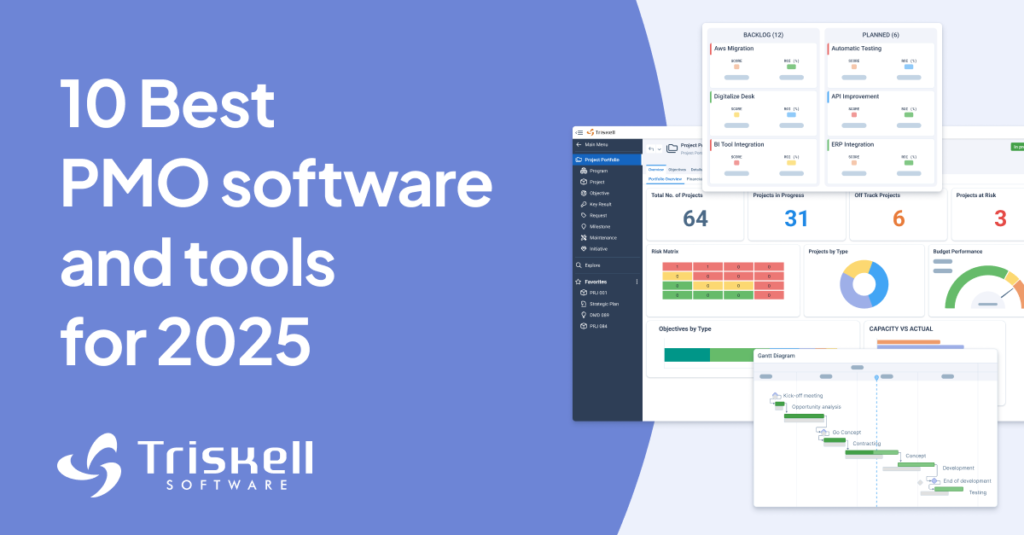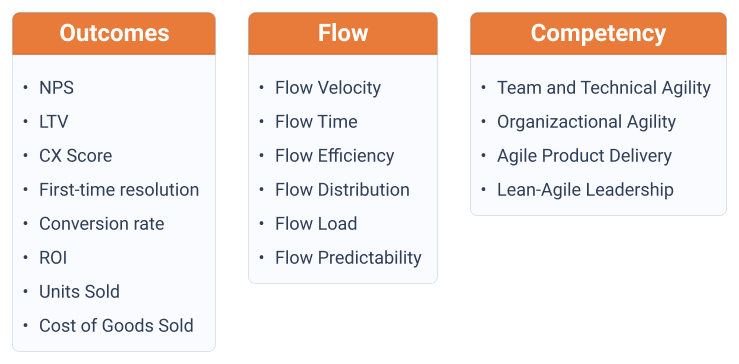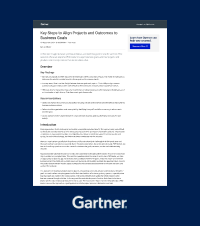Implementing SAFe with a 7-step roadmap

Everybody is talking about SAFe. More and more companies are looking for the formula to scale Agile throughout the organization, but not all of them succeed in the attempt. Either because of strong resistance to change within the organization or because of the difficulty of designing a simple and easy-to-apply methodology with which to implement SAFe, in the end, many companies give up.
Scaling Agile at the enterprise level is not easy. It involves a change in business mentality that will encounter a lot of resistance along the way, in addition to having to dedicate resources to train people and hire new roles and external consultants to pave the way for the new Agile approach. As you can see, it’s not a bed of roses. From Triskell Software we explain to you how to implement SAFe in 7 steps, as well as solve the most common doubts that you are going to find in this path to business agility.
Agile, Lean, SAFe and the path to efficiency
Digital transformation has changed the way companies compete in their markets. Thanks to the rise of new and increasingly sophisticated disruptive technologies, plus the fact that users are becoming more informed and demanding, the life cycles of products and services are becoming shorter. This forces businesses to expand their product or service portfolio, and reinvent themselves to gain agility, competitiveness and market share.

AGILE PORTFOLIO MANAGEMENT
Make SAFe implementation a reality with Triskell
Learn more about Triskell’s Agile PPM solution
In this context, methodologies such as Agile and Lean have brought with them frameworks that have allowed many companies to adapt to this new competitive environment and offer new products and services in increasingly shorter periods of time, optimizing their processes and workflows along the way, and removing from the equation those elements that did not add value to the organizations’ value streams.
Until now, only IT companies, or the Design, Development, and IT departments of certain organizations, have implemented Agile and Lean in their teams to be able to deliver value to their organizations as soon as possible. However, these teams often encounter roadblocks or bottlenecks when they have to coordinate with other departments that have not yet embraced the change and continue with their old and inefficient processes and hierarchical workflows.
Businesses must reinvent themselves to gain agility, competitiveness and market share
And it is in these situations that the Agile leaders of organizations or the teams in charge of digital transformation ask themselves: how can I drive the change to this new Agile approach throughout the company? A question that you try to answer while, in parallel, there are companies that have managed to scale Agile throughout the organization thanks to the SAFe methodology, a framework that, taking both Lean practices and Agile methodology itself, manages to scale Agile in four levels: Team, Program, Value Stream and Portfolio.
If you want more information about what SAFe is, what its methodology consists of, and how the different levels are connected, we recommend you read the following post: SAFe, or how to scale Agile at the enterprise level
How to implement SAFe? A 7-step roadmap
More and more companies in different sectors are scaling Agile at the enterprise level, and there is a lot of documentation on the Internet explaining the methodology and how to carry it out. However, when it comes to implementing SAFe in your company, it is very common that you are not able to put in order the steps to follow, nor will you have clear answers to the challenges you will encounter along the way.
Broadly speaking, there are seven steps to scaling Agile at the enterprise level:
- Defining the mission and vision of the change to SAFe
- Nominating leaders of change in the organization
- Identify the organization’s value streams
- Creation of new roles at Team and Program level
- Training in SAFe at all levels of the company
- Launch of the first ARTs
- Expand and streamline SAFe at the portfolio level
Below we explain, in a simple way, each of the steps.
1. Defining the mission and vision of the change to SAFe
Switching to SAFe is not an overnight decision. A measure of this type must be based on the achievement of a series of strategic objectives that, for whatever reason, your company is not achieving. And it is at this point, in analyzing why the objectives are not being met, that the tipping point is reached, and it is decided to bet on change.
The change to SAFe must be based on the achievement of strategic objectives
To get to this tipping point, you need to ask yourself these questions:
- Have the companies in your sector already implemented business agility and has this allowed them to generate profits and better market positioning?
- Do you want to stay ahead of competitors who are lagging in adapting to change and implementing SAFe to become more competitive?
- Do you feel that the workflows and processes within your company have become outdated, creating frustration and discomfort in your teams and, as a result, you are losing competitiveness?
If the answer to any of these questions is YES, then this is the tipping point the organization needs to bet on change and start the exciting process of SAFe implementation.
Boost efficiency and deliver value faster
Request a demo today and discover how Triskell fosters collaboration across teams and facilitates faster value delivery within SAFe framework.
2. Nominating the leaders of change in the organization
Once that tipping point has been reached where the organization’s managers consider it strategic to push SAFe, it is necessary to form a team in charge of leading this change. Also known as LACE (Lean-Agile Center of Excellence), the mission of this team will be to drive the change to SAFe at all levels in the company, with five main functions:
- Communicate at all levels the objectives and needs of the change to SAFe.
- Design a roadmap, with the main milestones to be achieved during the process.
- Train people in Agile, Lean and SAFe practices, hiring external consultants if necessary.
- Participate in some of the most important events in SAFe, such as PI (Program Increment) Planning or Inspect and Adapt workshop.
- Measure the success of SAFe implementation through relevant metrics and KPIs.
Resistance to change will be the main obstacle when implementing SAFe
Resistance to change will be the main obstacle that the members of this team will encounter during this transition to business agility. It will also be their task to educate and make those agents opposed to change see the benefits that the implementation of SAFe will have for both the company and its teams.
3. Identify the organization’s Value Streams
One of the first tasks of the team in charge of leading the change in the organization will be to identify, list and prioritize the value streams of the corporation. Value Stream is the set of actions and initiatives performed to satisfy the customer’s requirements. Every value stream starts with a trigger in which, after the intervention of teams and processes during the different stages of development, value is delivered to the user.
SAFe takes ideas from Agile and Lean, being the delivery of value in the shortest possible time and the optimization of processes the most important ones, eliminating from the value flow those parts that do not suppose any benefit for the organization. Therefore, it is essential to identify all the value streams that are in place in the organization for two main reasons:
- To be able to configure ARTs (Agile Release Train) around value streams in order to streamline and optimize them.
- Prioritize the creation of ARTs according to the importance of these value streams at a strategic level for the organization.
Creation of new roles at Team and Program level
Once the value streams have been identified, it is necessary to create specific roles that are responsible for guiding the teams towards the continuous delivery of value at all levels of the organization. These are the roles that must be created so that SAFe can be implemented, at least during its first steps, with certain guarantees:
- Scrum Master: each Agile team in the organization must have a Scrum Master. Their main functions will be on the one hand, to ensure the proper internal functioning of the team, eliminating those impediments that hinder the delivery of value, and on the other hand to guide, train the team and, ultimately, lead the team towards the achievement of the objectives.
- Product Owner: Within Agile teams, they are responsible for defining customer needs and prioritizing the team’s backlog in order to deliver products and services tailored to the user’s needs. It is a very technical role that requires a perfect knowledge of all the details of the product or service that your team is working on.
- Release Train Engineer: like the Scrum Master with Agile teams, the Release Train Engineer acts as a facilitator, leading the group of events that take place in the ARTs (PI Planning, System and Adapt, etc), thus ensuring the delivery of value.
- System Architect: within the ARTs, this role is in charge of defining and communicating the technical vision and architecture of the solution to be implemented, ensuring the correct development of the same through the different events that make up the ART, and being in direct contact with the customer to know the type of solution they need.
The Release Train Engineer leads the events that take place in the ARTs
5. Training in SAFe at all levels of the company
Once the value streams and the ideal people to perform the roles mentioned above have been identified, LACE (the Lean-Agile Center of Excellence) has to make sure that all the people who are going to participate or facilitate the development of the different events that take place in SAFe are trained and understand the objectives to be achieved.
Whether they are managers, executives, or the different teams and roles involved in the creation of value in SAFe, all of them must know, to a greater or lesser extent, this methodology, and how the different events, roles and teams articulate with each other in order to deliver value to the organization. This training can be carried out by LACE members themselves or by external consultants with SAFe certifications.
6. Launch of the first ARTs
Once the value streams have been defined, and all the necessary people have been trained in the SAFe methodology, it is time to implement the first ARTs (Agile Release Train), which will be the engine of change in the organization.
To start with, it is better to implement one or two ARTs for those value streams that are not so decisive at the strategic level and for the benefits of the organization and, depending on the level of success achieved, expand the number of ARTs to other value streams of the organization.
Prior to its implementation, the objectives and the mission to be achieved must be clear, what value is to be delivered to customers. Once these points have been defined, the ART will be launched through a series of PI (Program Increment), which, as with Agile iterations, will have:
- A planning event (PI Planning).
- A Kanban where tracking the backlog and the status and progress of each of the actions.
- A final event (System and Adapt) in which there is a retrospective of the progress made and the things to improve for the following PIs.
All the teams responsible, to a greater or lesser extent, for the solution to be implemented must be involved in the ART, including teams like Development, Design, Legal, Programming, UX, Marketing, etc, and also the Scrum Master and Product Owners of the different Agile teams of the organization.
WHITE PAPER
Agile Portfolio Management – Agility by delivering changes as business as usual
7. Expand and streamline SAFe at the portfolio level
Once the first ARTs that we have decided to implement have been completed, it is time to take stock and see if the objectives that were defined prior to their implementation have been achieved. For this, a series of metrics and KPIs had to be defined with which to measure the progress and success of the ART, and if the value provided and the delivery times correspond or not to what was initially planned.
If the balance sheet is positive, and the ARTs that have been implemented have been a success, in which the value demanded by customers has been delivered, and the organization has proven to be agile and efficient in delivering that value, it is time to extend SAFe to the portfolio of products and projects of the organization and to include there all the Value Streams identified in our Step 3 (Identify the organization’s value streams). This is where Lean practices come into play, by which those value streams that do not add value to the organization will be refined and optimized.
FAQs when implementing a successful roadmap to SAFe
Throughout this process, you will surely have to face, in addition to the people who will oppose this change, many doubts and uncertainties. SAFe is a complex methodology that requires a high degree of adaptability to all organizations, teams and people who are going to implement it. This means many of the questions that arise may not have a single answer, and that answer may be subject to many conditions.
Even so, from Triskell Software we answer the most frequent questions that organizations ask themselves when implementing SAFe.
How many people should I train for this new change to SAFe?
It will depend on the size of the organization. Instead of the number of people, the focus should be on who needs to be trained, as there are certain roles and levels within the organization that will need to be trained in SAFe for its implementation to be successful:
- Company executives and managers will need to be trained in SAFe to understand its methodology and the benefits that will be achieved if they decide to bet on business agility.
- The teams to a greater or lesser extent, the teams that will be involved in the PIs should also receive specific training to understand the dynamics of these events, the information artifacts managed, and the outcomes expected to be achieved. In other words, you will have to list the departments and teams that participate in the organization’s value flows to train them in this new Agile mindset.
- Certain roles, such as Scrum Master, Product Owner, Release Train Engineer, etc., should receive more specific training, as the functions they have to perform are key to achieving correct performance in most events in SAFe and, therefore, facilitating continuous value delivery.
How long does it take to implement SAFe?
Depending on the maturity level of the organization using Agile methodologies and Lean principles, the time required to implement SAFe in an organization may change. For example, in a company where its most important departments already work following an Agile approach, it may not take more than a year to implement SAFe.
If, on the other hand, it is a highly hierarchical company with teams and departments that have not yet embraced Agile approaches, and do not have processes, or those that do have are not efficient, then the path to implementing SAFe will be longer and more complicated.
The change to SAFe must be based on the achievement of strategic objectives
After all, it is not simply a matter of applying a framework. SAFe is also about adopting an Agile approach, optimizing processes and focusing them on value delivery, changing the company’s mindset towards agility and efficiency, etc. And, for organizations that are not yet agile, it’s a journey that can take years.
How many people should compose an ART?
The minimum number of people required to compose an ART range from 50 to 125 depending on the complexity of the solution to be developed. There are Value Streams that require fewer complex solutions, for which having 50 people is more than enough. However, this amount may increase depending on the complexity of the solution to be implemented. Moreover, for some extremely complex solutions, it will even be required to have more than one ART. This is known as a Solution Train, which consists of several ARTs.
And what teams and roles make up the ARTs? All those who, to some extent, have an influence on the final result of the solution to be implemented. In addition to Agile teams and their corresponding Product Owners and Scrum Masters, ARTs should be made up of staff from operations, support, legal, finance, marketing, compliance, and other departments whose presence we consider relevant.
WHITE PAPER
Agile Portfolio Management – Agility by delivering changes as business as usual
How to measure the success of SAFe in the organization?
Business agility is measured through three dimensions of metrics that are totally different from each other. These dimensions are:
- Outcomes: This is where the level of customer and business satisfaction with the solution provided comes into play.
- Flow: what is measured here is the organization’s efficiency in delivering value.
- Competency: The company is evaluated on how well it is applying the SAFe competencies, which are the ones that enable business agility.
Each dimension contains a series of metrics that are totally different from each other and are scalable, i.e. they can be applied at Team level, PI level, and even Portfolio or Train Solution level. Some examples of KPIs for each dimension are the following:
What role do managers play in this new culture?
Achieving business agility requires leaders to move away from traditional management. Instead of command and control the initiatives that are being carried out, their functions should be to serve as counselors and facilitators, guiding their respective teams towards the continuous delivery of value by eliminating those barriers or bottlenecks that make value creation impossible.
Therefore, companies that want to implement SAFe should make an effort to retrain their managers, training them to acquire the skills required in Agile Leadership, such as continuous learning, adaptability, resilience and active listening.
If you want to know more about Agile Leadership, we recommend you read the following post: What is Agile Leadership and why to embrace it?
SUBSCRIBE TO OUR NEWSLETTER
Get stories like this in your inbox
Conclusion: a complex but successful path to business agility
Implementing SAFe is not an easy task, and organizations that attempt it will surely encounter many obstacles along the way that will cause them to give up. But in the current context, where competitiveness in all sectors has risen to levels that were unthinkable just a few years ago, those companies that fail to adapt to this complex environment will lose competitiveness and, therefore, profits.
SAFe and agile methodologies are the frameworks that organizations need to be able to react quickly and flexibly to the uncertainties that the current environment generates. If you think your company is losing competitiveness, or do you consider that there are growth opportunities in your sector due to the lack of agility of competing companies, do not think twice. SAFe is your best ally to achieve business agility and success.
Boost efficiency and deliver value faster
Request a demo today and discover how Triskell fosters collaboration across teams and facilitates faster value delivery within SAFe framework.

Related Content

Resource Management in Agile, Hybrid and Waterfall projects: key elements and best practices
Learn how to effectively manage resources in hybrid project management environments where Agile and Waterfall methodologies intersect.

Best PMO software and tools for 2025: the ultimate guide
Explore and compare the best PMO software for project management, resource allocation, and strategic alignment, all in one guide.

Why SAFe needs true Portfolio Management
Uncover the game-changer for SAFe success! Revolutionize your strategy with True Portfolio Management. Boost efficiency, drive results.
FAQs about SAFe implementation
What are the common challenges organizations face during SAFe implementation?
Common challenges include resistance to change, especially from departments or individuals accustomed to traditional hierarchical structures. Additionally, there may be difficulty in aligning all teams with the new Agile mindset, ensuring consistent training across the organization, and managing the complexity of coordinating multiple Agile Release Trains (ARTs).
Organizations might also struggle with measuring success effectively and maintaining momentum after the initial implementation phase.
Is it necessary to hire external consultants for SAFe implementation, or can it be done internally?
While it’s possible to implement SAFe internally, especially if the organization already has a strong foundation in Agile practices, hiring external consultants can provide valuable expertise, accelerate the implementation process, and help avoid common pitfalls.
External consultants bring experience from previous implementations, offering insights and best practices that might not be immediately obvious to internal teams. However, organizations should balance this with building internal capacity to maintain and adapt SAFe practices over time.
How can an organization assess its readiness for SAFe implementation?
Assessing readiness for SAFe implementation involves evaluating the current Agile maturity of the organization, including the existing processes, team dynamics, and leadership support for Agile transformation.
It’s important to determine whether the organization has clear strategic goals that align with SAFe principles, the willingness to invest in training and coaching, and the capability to create cross-functional teams that can work autonomously.
Conducting an Agile maturity assessment or readiness audit can provide a clearer picture of what areas need improvement before starting the SAFe journey.


